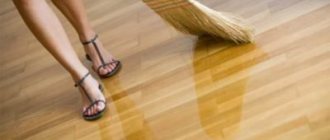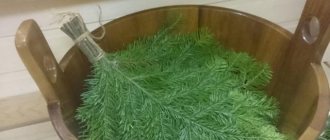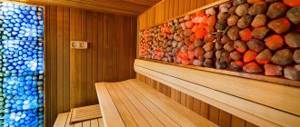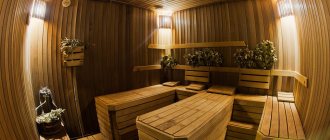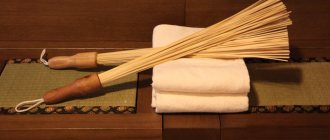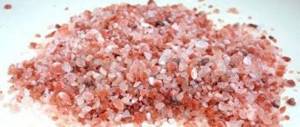Not long ago, the author of these lines happened to hear an entertaining radio program in which invited experts enthusiastically discussed the ballad of R. L. Stevenson “Heather Ale,” also known in Samuel Marshak’s translation under the author’s title “Heather Honey.” So, according to the words of the luminaries of modern science, it turns out that the Picts made honey from juniper. Which is not surprising, since honey-bearing heather - one of the symbols of the foothills of Scotland and heather - the common name for juniper - are perceived almost identically by ear, but in the current highly intellectual time, almost no one goes into detail. In general, two conclusions can be drawn from this. First, you should not perceive modern television and radio programs as an educational resource. Secondly, a juniper broom is not suitable for making honey. For it we have another, more advanced purpose.
Brief botanical information
Despite the fact that this plant lives for a long time - about 600 years, it is one of those plant organisms that are difficult to reproduce in natural conditions. The variety of juniper species is quite wide. It can be found in tree-like forms, about 12-15 m high, and in the form of shrubs and creeping plants, which have become so popular recently among specialists in the field of landscape design.
Separately, it is worth mentioning the durum juniper - a unique plant that is popular in Japanese culture as a key element of the bonsai composition. The leaves of young plants are coniferous, but over time they transform into scale-like leaves. The highlight of the plant is the so-called coneberry, which finds the widest application in a wide variety of areas of human activity.
Juniper uses
All parts of this plant have their purpose, not even excluding the root. So:
- Shishkoyagoda finds practical application, both in official medicine and in homeopathy, as an anti-inflammatory and diuretic. Such drugs are effective for urolithiasis of the kidneys and for skin problems, dermatitis and eczema of various types. On a more prosaic level, juniper fruit is one of the key ingredients when making gin. In cooking, juniper cones are added when cooking game to emphasize its characteristic taste. It is successfully used in a variety of savory sauces, gravies, and marinades. How the spice goes into cabbage pickled with apples. In general, in the kitchen it is more characteristic of the North German and Scandinavian tradition;
- Juniper roots are used to treat bronchitis, tuberculosis, superficial skin lesions, and a wide variety of etiologies. The butt part of tree-like forms is a valuable ornamental raw material;
- The wood has long been used to make canes and pencils. In addition to the excellent business characteristics of the array, the beautiful expressive texture and persistent, pungent aroma played an important role. Branches and needles are used in the treatment of allergic manifestations. From some species, in particular Mexican, juniper oil is obtained. Freshly cut branches are an excellent antiseptic. It is not without reason that in rural areas they were used to steam wooden tubs used for pickling vegetables. The phytoncides of this plant perfectly suppressed the vital activity of pathogenic microflora.
By the way! Speaking about the antibacterial qualities of this plant, it is worth saying that 1 hectare of continuous growth of juniper in the hot season is capable of releasing about 27 - 29 kg of substances of the phytoncidal group into the surrounding space per day, which are able to suppress the spread of pathogenic microorganisms over an area of 17 - 20 times larger.
Finally, it is worth noting that junipers are in great demand for strengthening scree and landscaping rocky areas. They are also good as long-term hedges.
Types of products
We will tell you about the plants used, their medicinal properties and how to properly brew a bath broom in order to experience the maximum benefit and pleasure from the procedure. The main components are branches of the following plants:
- Birch. Its branches are most often used for massage in the steam room. It deeply and gently cleanses the skin and removes toxins.
- Oak. The leaves of this tree have a dense structure and are wide, thanks to which they quickly build up steam. Dried structure makes it easier to press. The decoction left after soaking is an excellent remedy for skin diseases and sweating of the hands and feet.
- Eucalyptus. Priority of the Caucasian people. However, it was also liked in Russian steam rooms. The many benefits of this plant have been known for a long time, and an infusion of leaves is sprayed onto hot stones and walls. The room turns into an inhaler for the whole body, bringing a special sensation. For the acquired knowledge of how to properly soak a eucalyptus broom, the Russian people should thank their neighbors, many of whom are long-livers.
- Combined - consist of part of eucalyptus branches mixed with birch and oak. This option is used by experienced bath attendants. The branches of eucalyptus are very thin and, when carrying out the procedure, you will have to work quite hard, waving your arms.
- Nettle in the steam room has gained particular popularity in recent years. The herb brings burning benefits and perfectly treats diseases. To achieve a therapeutic effect, they whip with fresh branches, dipping them into boiling water only for a moment. Gout, back pain, rheumatism respond well to treatment with nettles.
- Juniper. With the use of this bush, the procedure turns into acupuncture sessions. A thorough massage activates all the body's protective functions. Of course, overly sensitive people should abandon the use of juniper in favor of other more gentle options. Otherwise, you risk acquiring the color of leopard skin, unpleasant itching and burning.
Juniper and bath
Small household items made from its wood are not uncommon in baths. Especially popular are kitchen cutting boards, compact hangers, cup holders, and bath headrests. A separate story is a juniper broom.
Juniper is one of the noble and quite rare plants that restore their population in the natural environment quite difficult and painfully endure barbaric human intervention. Therefore, the main point of this section, and the entire article as a whole, should be considered an urgent request to approach the matter of procurement as carefully, prudently and rationally as possible. In principle, if juniper is a rare guest in your area, then harvesting should be abandoned altogether, giving preference to deciduous brooms or conifers with a similar complex of effects, in particular fir.
By the way! An excellent alternative to filling the need for an item such as a juniper broom for a bath is to cultivate this plant in a summer cottage or garden plot. Not only can this plant itself serve as a striking element of a garden and park environment, but also formative pruning will completely provide the needs of the average bathhouse with noble raw materials.
Procurement of raw materials
Let us note the most important and determining aspects of the quality of the final product:
- Harvesting must be done in dry weather. Moisture on the surface of the shoots does not contribute to the normal course of the preservation procedure. The exception is the winter season, when it is enough to simply remove snow from the branches with a few active, energetic movements.
- Procurement must be based on the principles of reasonable sufficiency. Like all conifers, it is customary to use fresh juniper brooms for baths. Drying and loss of moisture from raw materials as a result of long-term storage can initiate not only shedding of needles, but also make using a broom uncomfortable.
- Earlier we mentioned pruning of cultivated plants as a source of raw materials. It is correct to store the resulting mass of shoots in a cool, dark room, such as a well-ventilated basement. At the same time, brooms are not formed at this stage; the raw materials are simply stored in a sheaf.
- When harvesting shoots, you need to take different formats. This will provide the opportunity to combine them in the final formation of the future broom.
Features of use
Juniper brooms, we repeat, in most cases, are used fresh. This is how you can get a fragrant and healing instrument. Although, a number of juniper adherents say that it becomes most delicate after 3–4 uses. With some loss of aromatic conditions, it acquires greater softness, which allows it to be used more intensively. In general, the rules of application can be formulated as follows:
- First of all, you need to decide how to steam a juniper broom for a bath. Opinions on this matter are divided. One part of the audience of practicing specialists insists that it is not worth fussing with. Simply rinse with warm water. In this case, one important detail is indicated. Brooms of this type must be used exclusively freshly cut. The other half of the expert community believes that it is necessary to steam, and they do it according to the following scheme. The instrument is placed in cold water for 5 - 7 minutes, then transferred to a tub in which it is filled with hot, but not boiling water, about 80 - 85 degrees Celsius. It is emphasized that it is water of this temperature that can reveal the potential of juniper raw materials. Exposure time - 12 - 15 minutes. After which the broom is wrapped in a cotton or linen towel for 10 - 12 minutes to “ripen”.
- It is necessary to use juniper brooms on the second entry into the steam room. By this time, both the body and the skin have somewhat adapted to the effects of fairly hard pine needles.
- As a rule, broom therapy is divided into two stages. More often - in the form of several visits to the steam room, the second and third. In one, the person steaming is beaten with a broom, in the final one, they are stroked.
- After completing the procedures, the broom is rinsed well in warm water, excess moisture is removed from it with energetic movements and wrapped in cotton cloth, and on top of it in plastic film. Until the next procedure, the broom is stored in the refrigerator on the bottom shelf, or in an unheated place. The main condition is a storage temperature of 2 - 4 degrees Celsius. Freezing is not allowed.
The benefits and harms of juniper broom
Juniper is a shrub from the cypress family, a distant relative of our conifers. Mention of its medicinal properties was already in ancient Egyptian scrolls. Ancestors believed that if you fumigate a house with this plant during an epidemic, the disease would go away. The Indians of North America even brought people with sore joints or skin infections to him, and, importantly, they actually recovered.
The juniper broom is the first healer. The needles of this plant contain healing essential oils, tannins, antiseptics, vitamins and microelements, which:
- Remove phlegm.
- Relieves swelling in the respiratory tract - especially useful for smokers and those with lung problems.
- Relieves hangover syndrome.
- Heals skin ulcers.
- They have an invigorating effect - relieve fatigue and stress.
- Stimulates sexual desire.
This is an ideal option for people suffering from bronchitis and tuberculosis and having joint problems. Use it if you have a sore spine or suffer from radiculitis.
But for those who are not confident in their vascular and cardiac systems, such a broom is contraindicated. However, like the bathhouse itself. Also, you should not use it during the active phase of skin diseases, or if there are recent wounds and abrasions on the body.
This is interesting
This life hack for women is an excellent tool in the fight against cellulite and stretch marks. If you want to get in shape, choose a juniper broom. It contributes to the normalization of the subcutaneous integument and brings tissue back to normal.
The advantage of such a broom is that it can be used repeatedly. It is quite resistant to wear. In addition, juniper can be frozen and the medicinal properties will not be lost, which allows the broom to be stored for a very long time.
You can purchase this item at a specialized bath goods store or knit it yourself.
Useful properties of juniper broom
A bath broom made from juniper can be successfully used in the following therapeutic and health procedures for:
- Colds of an infectious nature, at their initial stage. The main task is to prevent the development of the disease and its transition to an acute form;
- Diseases of the upper respiratory tract in chronic form;
- Relieving stressful conditions. The smell of juniper calms nervous excitement and normalizes sleep;
- Localization of inflammatory processes of the skin of various etiologies;
- Recovery from injuries, including those associated with damage to muscles and ligaments.
It would not be amiss to emphasize that juniper therapy is an excellent remedy for improving blood microcirculation, lymph outflow, and removing excess fluid and metabolic products from the body.
A word from Experienced! For people with sensitive skin, it would be more preferable to use a combined broom, when its total mass consists of 1/3 juniper shoots and 2/3 birch or linden.
Indications and contraindications
Indications for use of a juniper broom for a bath:
- prolonged stress;
- muscle pain;
- colds;
- dry cough.
Contraindications:
- diseases of the cardiovascular system;
- high body temperature, high blood pressure;
- skin diseases;
- chronic pathologies during exacerbation;
- malignant neoplasms.
Pregnant and lactating women are also prohibited from steaming. Before going to the steam room, you should consult your doctor.
